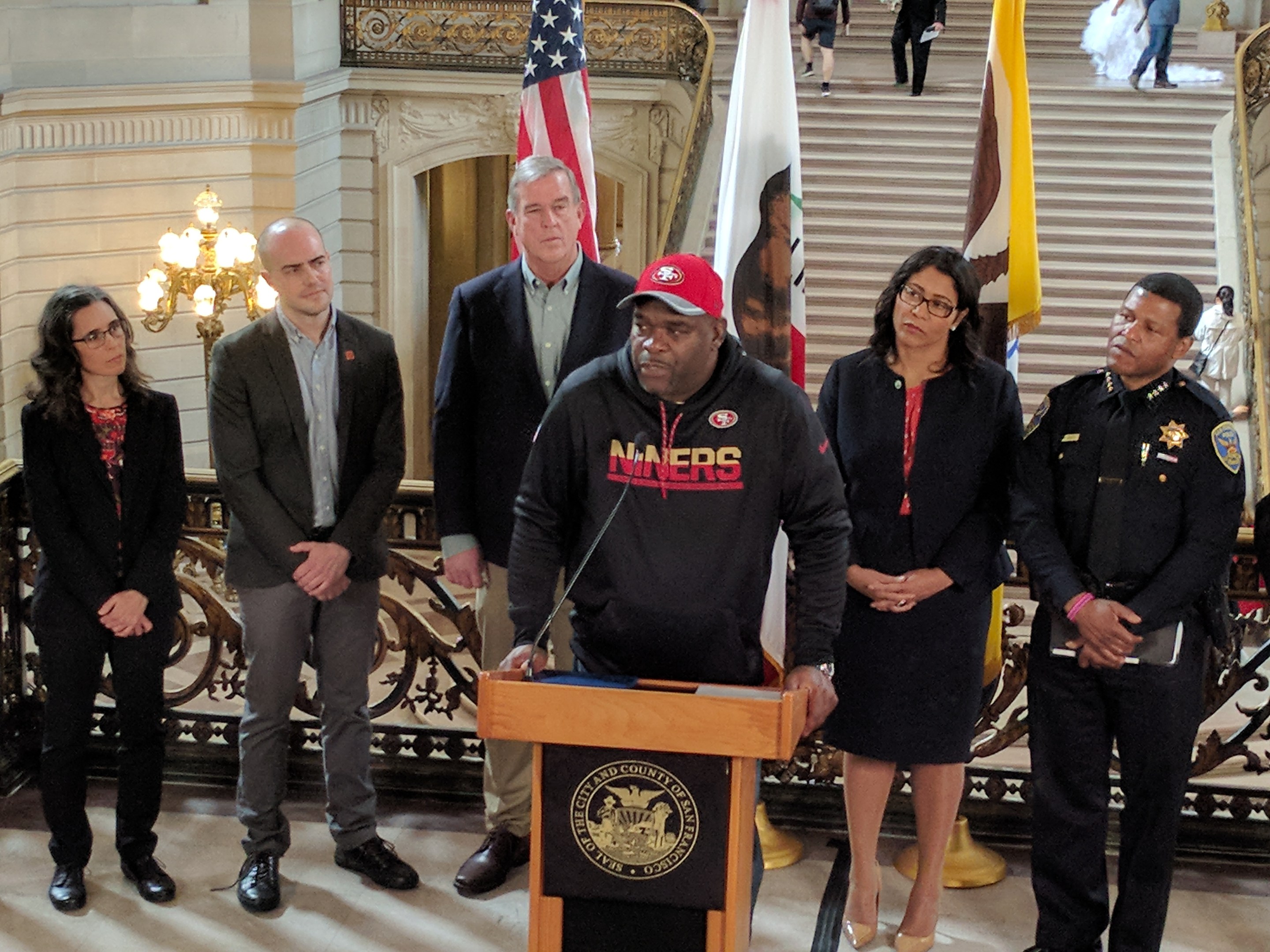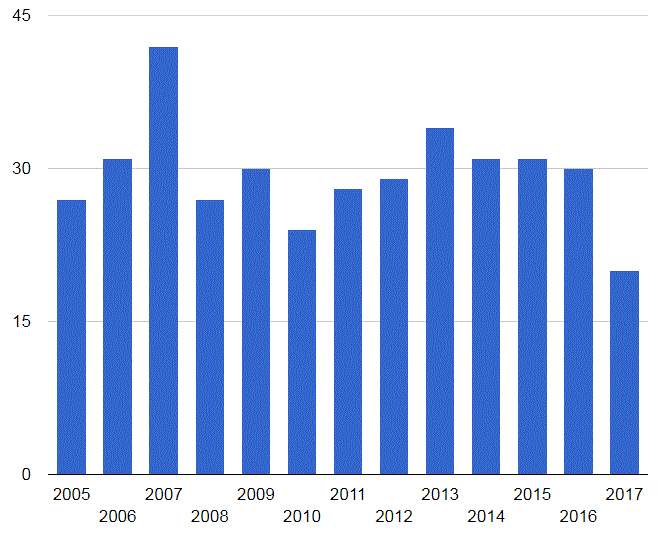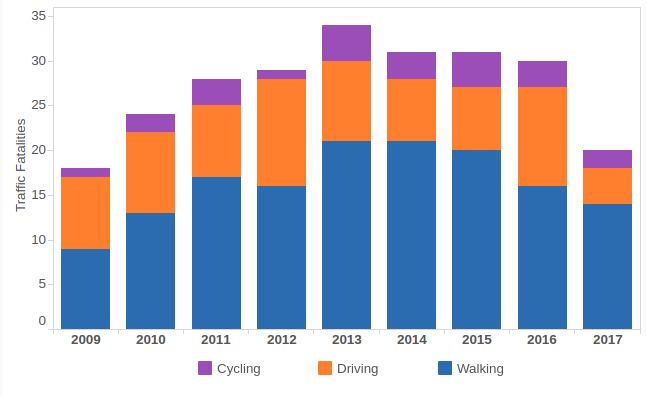Advocates and City Officials Discuss Progress on Vision Zero
5:04 PM PST on January 4, 2018

Walk SF’s Cathy DeLuca, SFBC’s Brian Wiedenmeier, Supervisor Jeff Sheehy, Families for Safe Street’s Alvin Lester, Acting Mayor London Breed, and Police Chief Bill Scott, at this morning’s event at City Hall to discuss progress towards Vision Zero. Photo: Streetsblog/Rudick
"Think about how fast you're driving. Think about that next stop sign. Just think if you're driving a motor vehicle," said Alvin Lester, co-founder of Bay Area Families for Safe Streets, and the father of 21-year-old Arman, who was killed in 2014 while riding his skateboard at 3rd and Cargo Way in San Francisco. Lester made his plea at a press event at City Hall this morning, held to discuss the apparent success in reducing fatalities and serious injuries on San Francisco's streets in 2017.
In 2013, the year before Vision Zero was launched in San Francisco, there were 34 fatalities, wrote the Mayor's office in a statement. "In 2017, that number fell to a record low of 20, a decrease of 41 percent. Pedestrian fatalities, at a historic low of 14 in 2017, fell 34 percent during the same period."
SFMTA director Ed Reiskin said those were the lowest counts since the city started keeping track in the early 1900s. But, he cautioned, "this is not a celebration," pointing out that twenty deaths are still far from the goals of Vision Zero, which aims to achieve zero or near-zero traffic deaths in San Francisco by 2024. SFMTA, meanwhile, built seventy more concrete bulb-outs in 2017, painted fifty safety zones, added fifty speed humps and upgraded fifty signals, among other work.
"The loss of one life is the loss of too many," said acting mayor London Breed, who saw her godson struck by a car (fortunately, he was not seriously injured). She stressed the importance of continuing the push to reduce fatality numbers. "We are working with the police to crack down on people speeding ... we have to do better," she said. "We want everyone to make it home at the end of the day."

Tomas Aragon, director of the Population Health Division at the San Francisco Department of Public Health, spoke about the importance of looking at traffic fatalities as a public health problem. He reminded people that for every fatality, there are many other crashes that cause serious injuries. He suggested looking at the problem like a pyramid, with traffic deaths at the top and different degrees of injury below, to get a better idea of the scope of pain and suffering. He said that the progress in reducing fatalities reflects an even more substantial reduction in those injured.
He added that by making streets safer, more people are encouraged to walk and bike, which also has a positive net health effect.

Fire chief Joanne Hayes-White talked about the emotional toll traffic crashes take on first responders. "We talk with the families ... and deal with the horror." She added that the fire department is slowly acquiring more nimble trucks that can deal with the tighter spaces required for bike lanes and pedestrian safety improvements. "We're getting smaller ambulances, too."
Hayes-White stressed that the fire department is fully behind street engineering projects that support Vision Zero.
"We want 2017 to be the start of a trend, and not just an anomaly," said Brian Wiedenmeier, Executive Director of the San Francisco Bicycle Coalition. To do that, he said, everyone has to push harder to finish delayed bicycle safety projects on Folsom and Howard, Turk, Market Street--and other streets where, in some cases, fire department objections to protected bike lanes have delayed safety improvements. "We can't afford to wait any longer," he said, citing the deaths of Mark Heryer, who was killed while riding his bike on Market Street in 2015, or Thu Phan, who was killed crossing Market Street in 2016. "Their memories are dishonored by further delays."
Of course, as Wiedenmeier and others pointed out, this year's statistical improvement could be an anomaly--but that's something that only time will tell. However, given the flourishing economy--which normally would lead to increased traffic fatalities--and the fact that the rest of the Bay Area and the country are still seeing increases in traffic deaths, the numbers do seem like a positive sign for San Francisco.
Unfortunately, people continue to die and sustain serious injuries as a result of delays. "We have to do more, do better, and do faster," said Cathy DeLuca of Walk SF. Lester said that the work won't be done until nobody else gets a phone call like he did nearly four years ago, telling him that his son was killed by a motorist. "We need to take our streets back."
Read More:
Stay in touch
Sign up for our free newsletter



